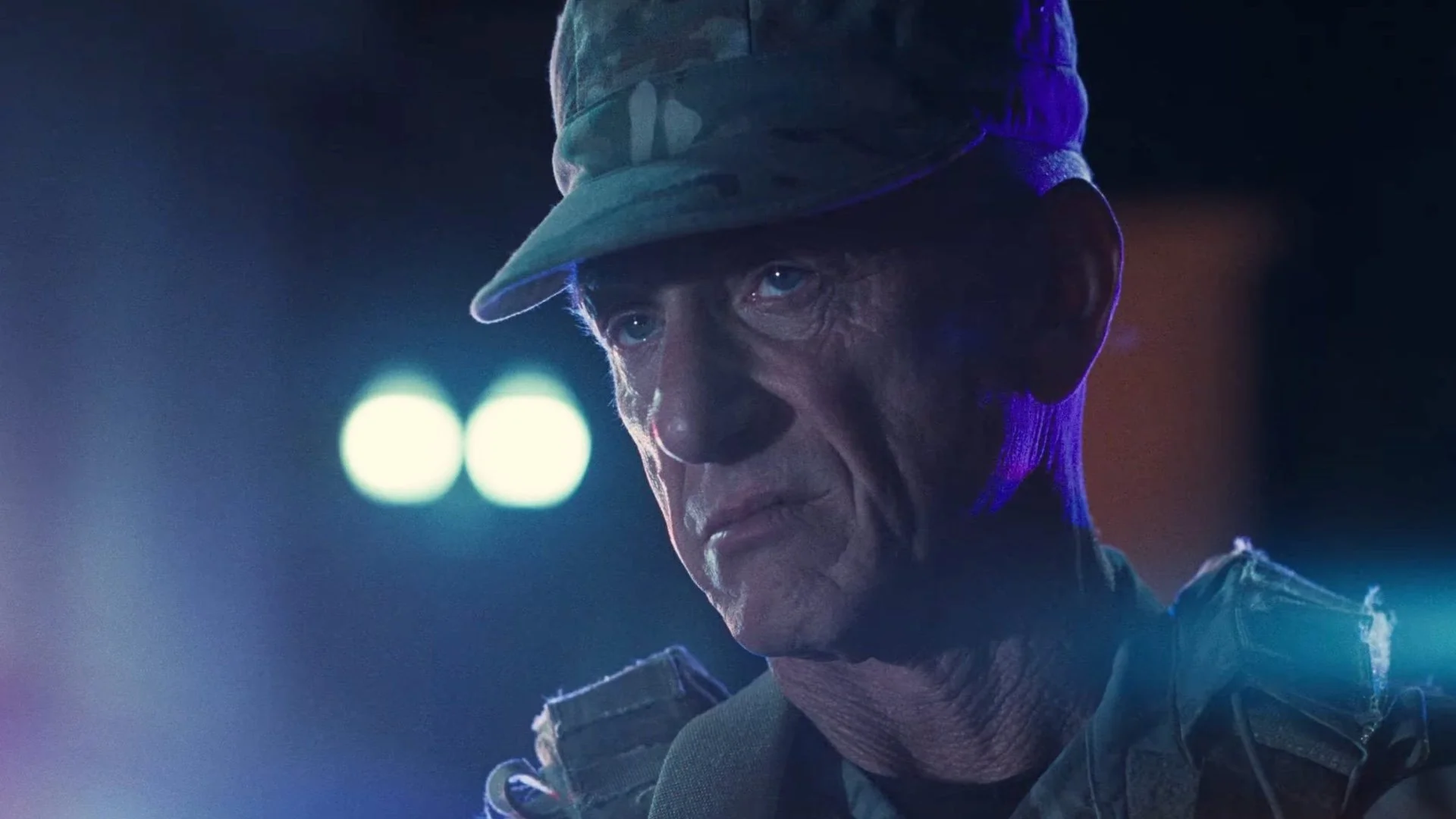Sean Penn’s Colonel Lockjaw in ONE BATTLE AFTER ANOTHER Might Be the Most Unsettling Villain of the Year
Paul Thomas Anderson’s latest film, One Battle After Another, doesn’t just deliver another wild and layered story, it also gives us one of the most disturbing villains to hit the screen in years. He’s so terrifying precisely because he feels so uncomfortably real.
The film follows Bob Ferguson (Leonardo DiCaprio), a former revolutionary forced into hiding after his radical past comes back to haunt him. That haunting arrives in the form of Sean Penn’s Colonel Steven J. Lockjaw, a battle-scarred, racist zealot determined to erase the mistakes of his youth.
What unfolds is a cat-and-mouse story anchored by one of the most chillingly human antagonists Anderson has ever put on screen.
Why Lockjaw Works So Well as a Villain
On the surface, Lockjaw looks like nothing more than a hardened military man. But underneath, his psychology is a mess of hypocrisy, insecurity, and a hunger for validation from the ugliest corners of society.
His allegiance to the absurdly named white supremacist group “The Christmas Adventurers Club,” his predatory fixation on Teyana Taylor’s firebrand revolutionary Perfidia Beverly Hills, and his obsessive drive to kill his own daughter Willa (Chase Infiniti) paint a portrait of someone monstrous.
That balance is what makes him stick. He’s not a supervillain. He’s a broken, hateful man whose worldview festers in ways that are disturbingly familiar.
Penn’s Performance Pushes It Over the Edge
Penn has played his share of grizzled, intense characters before, but Lockjaw gives him space to go darker and more layered than usual. His very first scene sets the tone as Perfidia storms an immigrant detention center only to be confronted by Lockjaw in a tense standoff that brims with sexual menace and power games.
In lesser hands, the scene could have collapsed under its own provocation. Instead, Anderson’s control and Penn’s precision create a disturbing foundation that pays off for the rest of the film.
From there, every time Lockjaw steps into frame, the atmosphere changes. His obsession with Perfidia feels both grotesque and tragic, reflecting the ugly contradictions that define him. He could have easily slipped into caricature, but Penn digs into the character’s warped humanity, making him scarier than any exaggerated villain.
Why Anderson Needed a Villain Like This
Some might wonder why Anderson, adapting Thomas Pynchon’s Vineland, leaned into a figure as bizarre and grotesque as Lockjaw. But in a story about revolution, state violence, and white supremacy hidden in plain sight, the choice feels essential.
Lockjaw isn’t just one bad man, he’s a composite of toxic entitlement, racism, and authoritarianism. He embodies everything the film’s younger generation of fighters is pushing back against, especially Willa, caught between her mother’s revolutionary legacy and her father’s poisonous worldview.
The Lasting Image
Lockjaw’s final moments are as grotesque as they are ironic as he is gassed by his own allies, disfigured, and buring in a furnace after clawing his way to power. It’s a brutal end, but one that fits a character defined by hatred and hypocrisy.
In a movie filled with strong performances, DiCaprio anchoring the story, Taylor burning up the screen as Perfidia, and Chase Infiniti all but guaranteeing awards attention, it’s Penn’s Lockjaw who lingers longest in the mind.
He’s the year’s most unforgettable villain because he’s not a monster out of myth, but a mirror of real-world hatred and insecurity.
